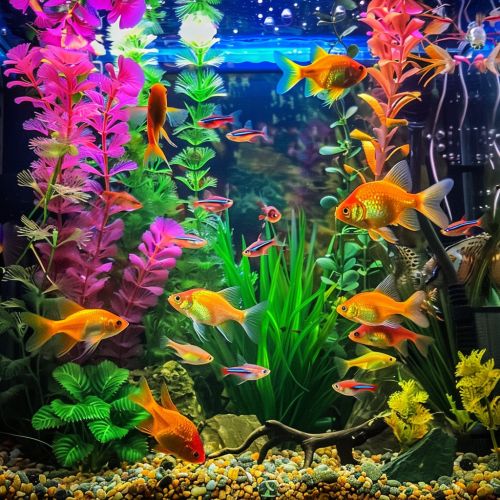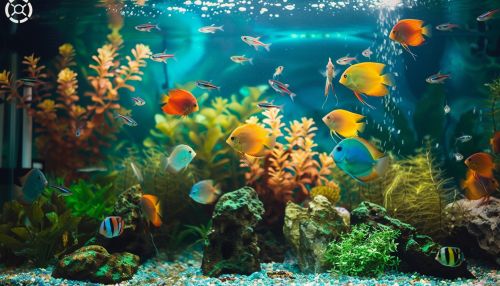Fishkeeping
Introduction
Fishkeeping is the hobby of maintaining aquatic organisms in the home or in public institutions. This hobby has been around for centuries, with the ancient Sumerians keeping fish in artificial ponds nearly 4,500 years ago. Today, fishkeeping is a popular pastime enjoyed by people of all ages, from children to seniors.
History
The history of fishkeeping dates back to ancient times. The ancient Egyptians and Romans were known to have kept fish, and the Chinese have been breeding goldfish for over a thousand years. The practice of fishkeeping became more widespread in the 19th century with the development of glass aquariums. The first public aquarium was opened in London in 1853, and the hobby quickly spread to other parts of Europe and North America.
Types of Fishkeeping
Fishkeeping can be broadly divided into three categories: freshwater, saltwater, and brackish water fishkeeping. Each type requires different equipment and knowledge to maintain the health and well-being of the fish.
Freshwater Fishkeeping
Freshwater fishkeeping is the most common type of fishkeeping. Freshwater fish are often easier to care for and less expensive than their saltwater counterparts. They come in a variety of sizes, shapes, and colors, making them popular choices for beginners.
Saltwater Fishkeeping
Saltwater fishkeeping, also known as marine fishkeeping, involves maintaining fish from the ocean. This type of fishkeeping is more complex and expensive than freshwater fishkeeping due to the specific water conditions required and the cost of the fish themselves. However, saltwater fish are often more colorful and diverse than freshwater fish, making them a popular choice for advanced hobbyists.
Brackish Water Fishkeeping
Brackish water fishkeeping involves maintaining fish that live in environments with a mix of fresh and saltwater, such as estuaries and mangroves. These fish require specific water conditions that can be challenging to replicate in a home aquarium.
Equipment
Maintaining a healthy aquarium requires various pieces of equipment. The basic setup includes an aquarium tank, a filter, a heater, and lighting.
Aquarium Tank
The aquarium tank is the primary component of fishkeeping. Tanks come in a variety of sizes, from small nano tanks suitable for a few small fish, to large tanks that can hold hundreds of gallons of water. The size of the tank will depend on the type and number of fish being kept.
Filter
The aquarium filter is essential for maintaining water quality. It removes waste, excess food, and potentially harmful chemicals from the water. There are several types of filters available, including mechanical, chemical, and biological filters.
Heater
The aquarium heater is used to maintain a consistent water temperature in the tank. Different species of fish require different water temperatures to thrive.
Lighting
Aquarium lighting is important for both aesthetic and practical reasons. It enhances the colors of the fish and plants in the tank, and in some cases, it can help to promote plant growth.
Fish Species
There are thousands of species of fish that can be kept in an aquarium. Some popular choices include bettas, goldfish, guppies, and tetras for freshwater tanks, and clownfish, tangs, and angelfish for saltwater tanks.
Aquascaping
Aquascaping is the craft of arranging aquatic plants, rocks, and other materials in an aesthetically pleasing manner within the aquarium. This can create a natural-looking environment for the fish and enhance the overall appearance of the aquarium.
Maintenance
Regular maintenance is crucial to keep an aquarium healthy. This includes regular water changes, testing the water for correct parameters, and cleaning the tank and equipment.
Benefits
Fishkeeping has several benefits. It can be a relaxing and rewarding hobby, and studies have shown that watching fish can reduce stress and improve mental health. Additionally, maintaining an aquarium can be an educational experience, teaching responsibility and the basics of aquatic biology.
Challenges
Despite its many benefits, fishkeeping also has its challenges. These include the initial cost of setting up an aquarium, the ongoing cost of maintenance, and the time and effort required to keep the aquarium healthy. Additionally, some fish species can be difficult to care for and may require advanced knowledge and skills.
See Also


